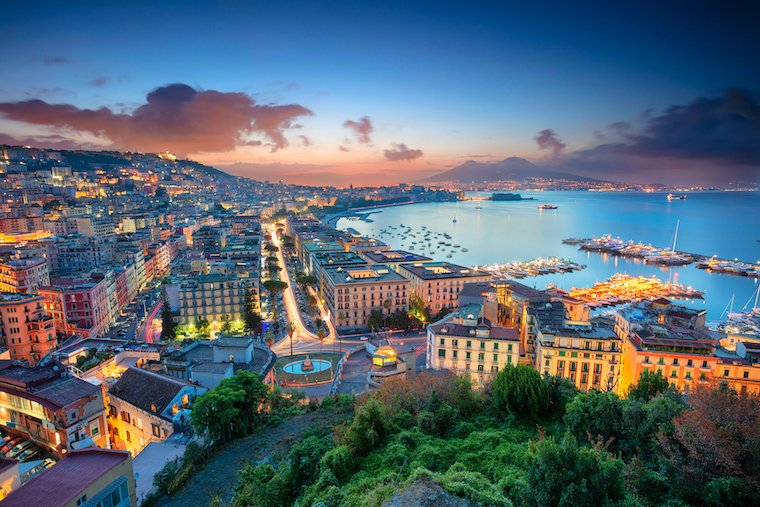Salerno is located in a particularly favourable position between the Amalfi coast with its characteristic seaside villages and the initial part of Cilento, with its long beaches and endless stretches of pine forest. Choosing this city as a travel destination, therefore, allows some of the most popular places in Campania to be within easy reach. The city's geography is very varied and allows visitors to experience and appreciate many different scenarios! Salerno, in fact, stretches both along the coast, where a boulevard overlooking the sea is an excuse for long walks, and inland. This, in turn, is divided between the historical centre, characterised by narrow, picturesque alleys, and the modern part of the city. Behind the flat side, then, rises a hilly portion that reaches as far as Mount Bonadies. What does this name mean? Literally, it means 'good morning': in fact, the mountain was called this in ancient times precisely because of the position it occupies: the highest in the city, the first to be illuminated by the rays of the rising sun.
Precisely because of its favourable position, straddling the Amalfi Coast and Cilento, Salerno's cuisine includes varied dishes that are the fruit of this fortunate location. We find, therefore, dishes that embrace different traditions, but all characterised by the unmistakable flavours of the South. Among the first courses, in addition to the unfailing spaghetti with seafood, excellent in almost all the seaside towns of Campania, a dish unknown to many triumphs, namely pennette all'ogliarese, seasoned with courgette flowers, hulled pumpkin, courgettes, onion and guanciale (cured pork cheek): a peasant dish with a rich and creamy flavour. Second courses include the tasty and traditional stuffed spleen with garlic, parsley and other spices, a typical dish linked to the patronal feast of San Matteo held on 21 September; or, for those in search of the flavours of the sea typical of the past, we recommend anchovies 'alla piattella', a 'poor man's' but very tasty dish: anchovies cooked in a pan with extra virgin olive oil, chopped parsley and garlic, perfect if accompanied by a good white wine, perhaps a fiano di Paestum. Dairy lovers, then, will not want to miss a taste of the famous mozzarella di bufala DOP, typical of some areas of Cilento and easily found in local restaurants and trattorias, or you can enjoy it as an ingredient in pizza instead of mozzarella. As for desserts, Salerno has a vast pastry shop that embraces many of the desserts of Campania in general, but among the local sweets we find the 'scazzetta del cardinale', a sweet with an enveloping and delicate flavour made with sponge cake filled with cream and strawberries, covered with a pink/red strawberry icing, hence scazzetta, which would be the typical scarlet cardinal's hat; and it is impossible not to taste the Giffoni crespella garnished with honey and Giffoni IGP hazelnuts.
In Salerno, the months are punctuated by events that are now true appointments with the city's traditions and social life! Let's start with one of the most eagerly awaited of the year, by Salernitans and non-Salernitans alike: Luci d'Artista. From the first days of December and throughout the Christmas period, Salerno is invaded by stupendous illuminations that explode, entwine and climb up the city streets; the theme changes every year and this popular event transforms the urban fabric into a magical place where even grown-ups become children again. In September, on the 21st of the month, is the feast day of St Matthew, the patron saint, whose statue is carried in procession through the streets of the city during a solemn ceremony, ending with a fireworks display in front of the sea. In April, it is the turn of a richly evocative medieval fair, which winds its way through the streets in an atmosphere of festivity and exuberance: it is the Fiera del Crocifisso Ritrovato (Fair of the Crucifix Rediscovered), linked to a miraculous event that occurred in the Middle Ages, according to which the crucifix in the church of San Benedetto moved its head. Apparently, it did so as a sign of forgiveness towards Pietro Barliario, guilty of having caused his two nephews to die of fright because of a book of necromancy. This occasion transforms Salerno into a true open-air theatre, populated by markets, stalls, traditional food and wine products and artistic performances.

